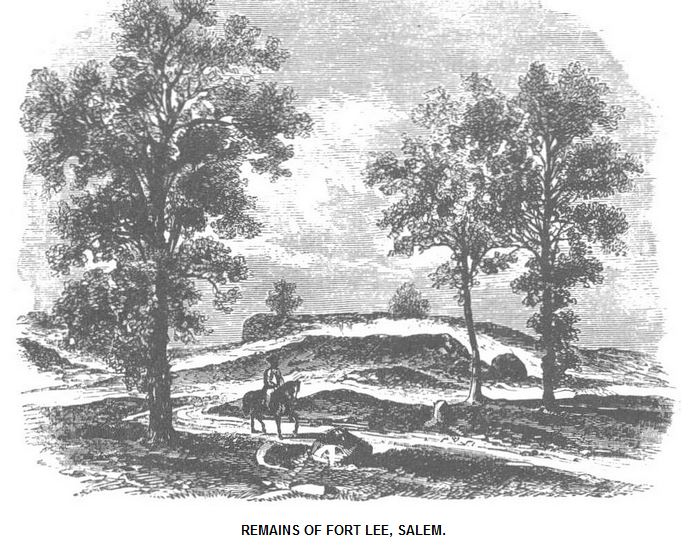Fort Lee is a historic military fort on Salem Neck, which is a peninsula in the northeastern section of Salem, Massachusetts.
The fort is a located on a high point on Salem Neck, commonly referred to as the heights, off of Fort Avenue, about 500 feet from the northern shore of Salem and 1400 feet from the southern shore.
Built in 1776, the fort is one of two military forts built in Salem, the other being Fort Pickering on Winter Island. The land that the fort was built on was once common pasture land.
Fort Lee is an irregular four pointed star earthwork fort with a gate located at the west rampart.
The fort is unique because it is one of the few Revolutionary War period earthwork forts in Massachusetts that has survived relatively intact.
The site was first fortified with breastworks in 1690. The first major fortification was built on the site in 1742 when platforms for 16 cannons were built and ramparts measuring 70 feet tall were constructed.
Fort Lee was constructed in response to a series of attacks by British war ships on local schooners. In August of 1775, the British war ship the Falcon chased some Salem schooners into Cape Ann Harbor and captured one of them. A few months later in October, a British war ship, the Nautilus, chased the American schooner Hannah into nearby Beverly harbor, prompting Beverly and Salem militia to fire upon the Nautilus.

These attacks prompted the town of Salem to vote on October 23, 1775 to block Salem harbor channel with hulks, to fortify the existing forts and to build Fort Lee, which was completed in 1776.
Fort Lee saw no military action throughout the Revolutionary War and mostly served as a deterrent against British invasion of Salem Harbor.
During the War of 1812, the fort was reactivated and repaired but wasn’t rebuilt like Fort Pickering was. In 1863, Fort Lee underwent minimal repairs with some changes made to accompany four heavy guns.
In 1867, the fort was transferred to the federal government and then in 1922 it was deeded to the city of Salem and became a city park.
In 1976, the Salem Bicentennial Commission restored the fort by clearing brush and overgrowth, creating paths and installing interpretative signs.
On April 14, 1994, Fort Lee was added to the National Register of Historic Places.
In 2014, Boy Scouts Troop organized a community effort to clean up Fort Lee, clearing all major trails, removing over 1,200 pounds of trash and seven abandoned tent sites.
Due to its lack of rebuilds and major renovations, the fort is one of only a small number of 18th century forts in Massachusetts that still looks the way it did when it was first built.
The fort wasn’t the only structure built on Salem Neck. The area was also once home to an almshouse, a smallpox hospital and a contagious disease hospital as well as a quarantine burial ground for victims of infectious disease, which were all established in the 18th and 19th century. The structures were later demolished in the 1950s and 1980s.
The fort is a part of the Salem Willows Historic District, which was also added to the National Register of Historic Places in 1994.
Sources:
Osgood, Charles and H.M. Batchelder. Historical Sketch of Salem 1626-1879. Salem Essex Institute, 1879.
“Fort Lee and Fort Pickering Conditions Assessment, Cultural Resources Survey, and Maintenance and Restoration Plan.” City of Salem, salem.com/sites/g/files/vyhlif3756/f/uploads/fortsp2.pdf
“Fort Lee.” MACRIS, Massachusetts Cultural Resource Information System, mhc-macris.net/Details.aspx?MhcId=SAL.926

I remember visiting the site in the late 70s. I’m glad to see that it’s still somewhat remembered.